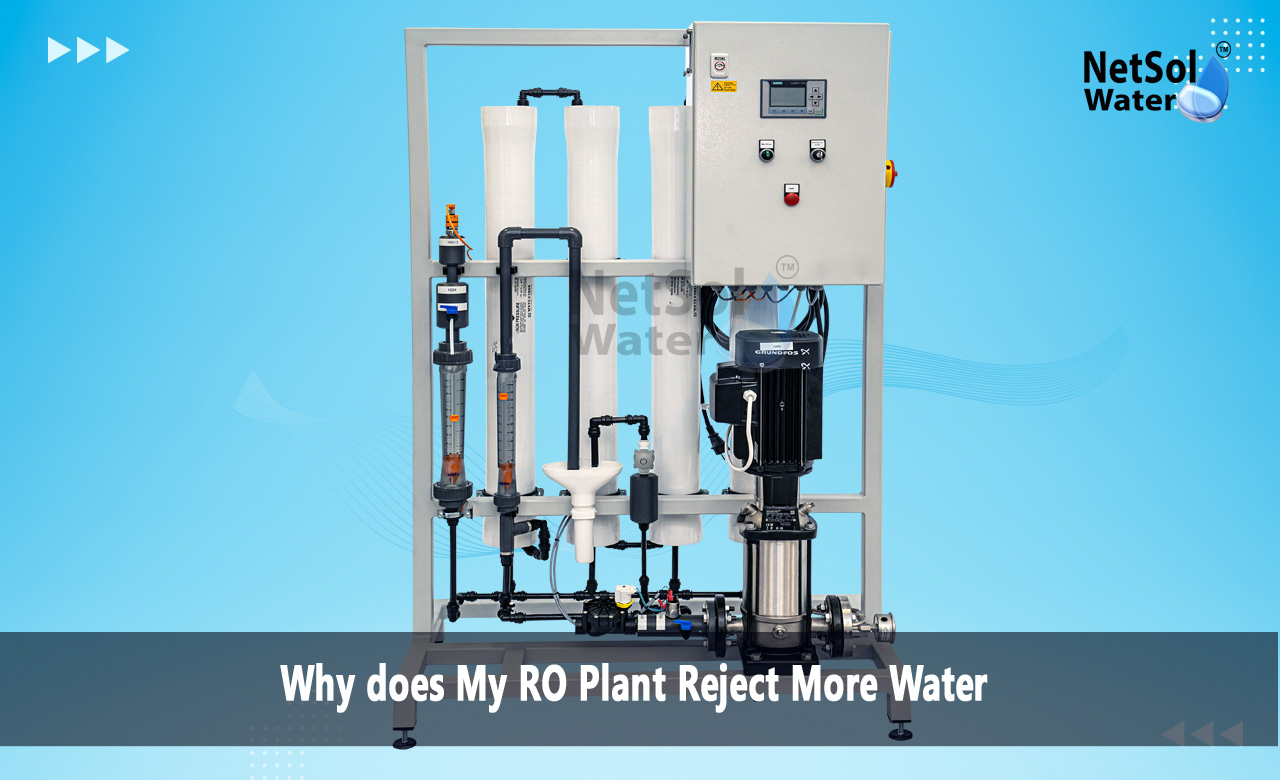Why does My RO Plant Reject More Water?
An RO plant is basically a device which removes impurities and makes water safe and clean to use in the industries or residential purposes. In case your RO plant starts to reject more water than usual, this might result in major water wastage, increased operating costs, and a decrease in the efficiency of the system. The cause behind increased water rejection in an RO plant should first be understood. This helps you diagnose any kind of potential problems and takes corrective measures to ensure restoration of optimum working conditions. Here are several possible causes and corresponding solutions to determine why your RO plant might reject more water than intended.
Common Causes of High RO Water Rejection
Blocked or Fouled Pre-Filters
Pre-filters in an RO plant act as the first guard by filtering the incoming water of larger particles, sediment, and debris before entering the RO membranes. These filters save the membranes from damage but will eventually get fouled with the contaminants and result in the partial blocking of the water flow which causes higher rejections of the water.
Solution:
· Inspect and clean pre-filters frequently to prevent it from becoming laden with dirt.
· Change pre-filters as advised by the manufacturer to prevent accumulation of dirt.
· Determine pressure drop across the pre-filters; it will detect clogging in the pre-filter early.
Poor Performance of Membranes
The core component of the system is the RO membranes, which separate impurities from water. When the membranes become fouled, scaled, or damaged, their efficiency decreases, and water rejection increases.
Solution:
· Regularly inspect the RO membranes for signs of fouling, scaling, or physical damage.
· Chemical cleaning using appropriate cleaning agents—either acidic or alkaline—to remove biofouling or scaling.
· Monitor membrane performance by recovering rate, pressure drops, and salt rejection rate to ensure they are working optimally.
High TDS in Feed Water
The feed water coming into the RO plant might have high levels of Total Dissolved Solids (TDS), which comprise salts, minerals, and many other impurities. When TDS is too high, the RO membranes must work harder to remove these impurities, resulting in increased rejection of water in most cases.
Solution:
· Check the TDS levels of feed water periodically for water quality information.
· Implement effective pre-treatment systems such as activated carbon filters, softeners, or antiscalants to reduce TDS levels before reaching the membranes.
· Adjust the recovery rate and membrane operating conditions to handle high TDS effectively.
High Water Pressure Issues
Pressure is one critical parameter through which water enters and passes in an RO plant for effective filtration of water. The amount of pressure either too much or too low, creates a problem in water rejection. The higher pressure above the design will lead to membranes to reject more water than necessary with decreased efficiency.
Solution:
· Ensure the pressure gauges that the system operates in the range designed for the system.
· Optimize the booster pump and membrane configuration to maintain proper operating pressure.
· Avoid overloading the system by exceeding the recommended pressure limits.
Fouling and Scaling
Fouling is the accumulation of organic matter, whereas scaling is the deposition of salts and minerals on RO membranes. Both can greatly affect the performance of the membranes and result in higher water rejection.
Solution:
· Clean the membranes regularly with chemical cleaning solutions to remove fouling and scaling.
· Use antiscalants for prevention of scaling and control of mineral buildup in the feedwater.
· Ensure adequate pre-treatment to remove contaminants, which lessens the possibility of fouling to the water before it reaches the membranes.
Conclusion
An RO plant rejecting more water than expected can be due to several reasons such as pre-filters getting clogged, poor membrane performance, high TDS levels, incorrect water pressure, or fouling and scaling. Therefore, the causes need to be identified and corrected in time so that your RO plant can operate economically and efficiently. Regular maintenance practices, proper monitoring, and optimal pre-treatment practices significantly ensure low water rejections, keep the system working for longer intervals, and stretch the lifespan of the RO membrane. In many ways, optimizing the performance of RO plants and protecting against wasteful water consumption call for proactive prevention and effective action.
Do you need an advice or assistance on selecting the best water and waste water treatment unit? We have solutions for all your problems!
Let us know your problem, our experts will make sure that it goes away.
For an assistance or related query,
Call on +91-965-060-8473 Or write us at enquiry@netsolwater.com



